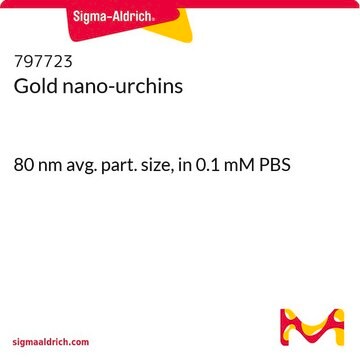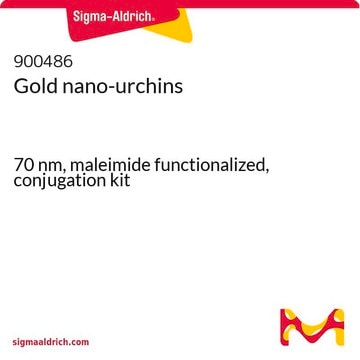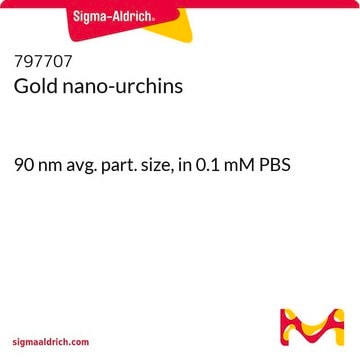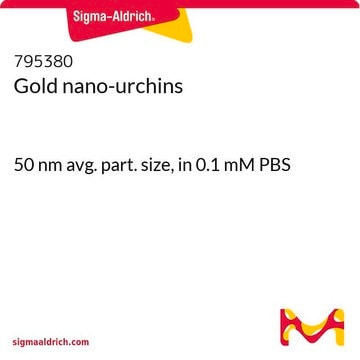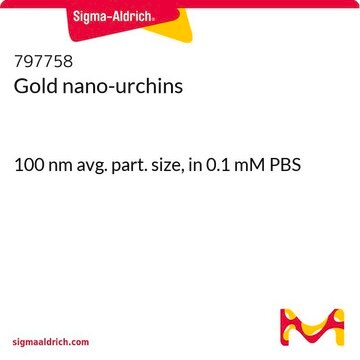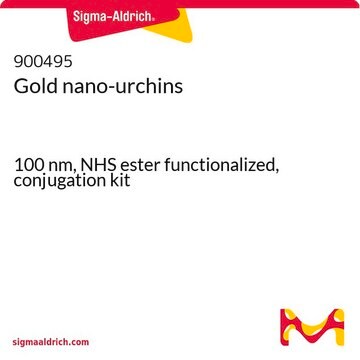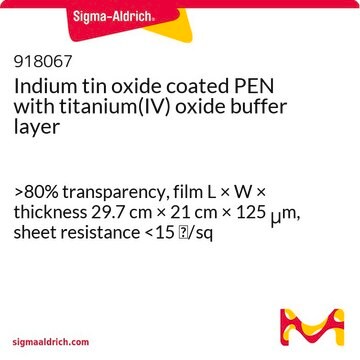797731
Gold nano-urchins
70 nm avg. part. size, in 0.1 mM PBS
Synonym(s):
Gold nanoparticles, Non-functionalized gold nanoparticles
About This Item
Recommended Products
description
Particles:∼1.20E+10/mL
form
liquid
nanourchin
OD
1
avg. part. size
70 nm
λmax
600 nm
storage temp.
2-8°C
Looking for similar products? Visit Product Comparison Guide
Application
Storage Class Code
12 - Non Combustible Liquids
WGK
nwg
Flash Point(F)
Not applicable
Flash Point(C)
Not applicable
Certificates of Analysis (COA)
Search for Certificates of Analysis (COA) by entering the products Lot/Batch Number. Lot and Batch Numbers can be found on a product’s label following the words ‘Lot’ or ‘Batch’.
Already Own This Product?
Find documentation for the products that you have recently purchased in the Document Library.
Articles
Biomaterials science integrates smart materials into biological research, requiring a deep understanding of biological systems.
Our team of scientists has experience in all areas of research including Life Science, Material Science, Chemical Synthesis, Chromatography, Analytical and many others.
Contact Technical Service